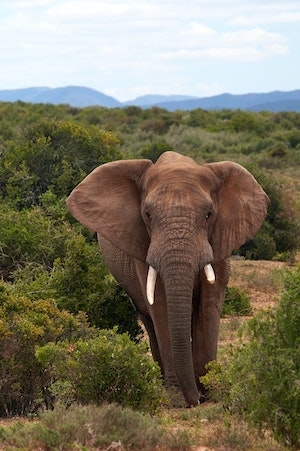The impact of the COVID-19 pandemic and lockdown regulations on wildlife poaching hotspots and trafficking routes in southern Africa


This report, written and researched by GRG Senior Researcher, Annette Hübschle, presents the findings of a research study on poaching hotspots and trafficking routes in southern Africa conducted between June and October 2021. The key objective of the study was to update poaching hotspots and trafficking routes in, through and out of southern Africa, with a specific focus on the impacts of the COVID-19 pandemic, lock-downs and associated public health measures that were implemented to flatten the infection curve in the subregion.
Poaching statistics and observations by experts confirm that there was a reduction in poaching of charismatic megafauna (elephants and rhinos) across most of the sub-region in the early days of the pandemic. However, the “chilling effect” was short-lived for rhinos. Rhino poaching has picked up in South Africa’s Kruger National Park and private reserves, and continues in Botswana where the Okavango Delta was identified as a poaching “hotspot”. Elephant poaching appears to have decreased and not only for reasons linked to COVID-19 control measures but also due the disruption of wildlife trafficking networks in Tanzania and Malawi and successful implementation of other protective measures. Lion poaching and the trafficking in body parts appear to be localised to lion range states and specific landscapes in South Africa, Mozambique and Tanzania. Pangolin poaching and trafficking appears to have increased with seizure data and observations by experts painting a worrisome picture.
Most experts agreed that trafficking of illegal wildlife and body parts slowed down during the initial lockdown period of March to September 2020. Restrictions on air travel disrupted wildlife smuggling and trafficking via cargo and commercial flights out of the subregion. Easy to conceal in check-in or carry-on luggage, the usual mode of smuggling rhino horn out of the region would be to use mules on aeroplanes. However, due to low volumes of flights departing from southern Africa to destinations located in Asian markets, there was a pause in rhino trafficking during 2020. Investigators believe that rhino horn was stockpiled in the intervening period and as soon as borders and air travel started re-opening, rhino horn trafficking reignited.
Key trafficking hubs for rhino horn remain Maputo International Airport in Mozambique and OR Tambo in Johannesburg, South Africa. An interesting new trend documented by several regional and country experts was that traffickers were focusing more on using shipping routes on-boarding container ships, sailboats or dhows to move wildlife contraband. Sail boats and dhows are used to transfer wildlife contraband along the African coastline. In some instances, small fisher boats would meet cargo ships and transfer wildlife contraband at sea for transit to overseas markets.
There is no doubt that the COVID-19 pandemic and associated quarantine and lock-down regulations impacted wildlife poaching and trafficking, as well as protective and conservation measures implemented to disrupt IWT. While some impacts are short-lived such as the temporary suspension of air travel and linked smuggling routes, others may be long-lived if not permanent including the migration to digital wildlife trading and payment systems of poachers, traffickers and consumers. As we are still in the pandemic it is too early to draw definite conclusions. However, it has become clear that illegal supply chains and networks were quick to adapt to the new lock-down realities (they are shock resistant) and proved resilient whereas legal wildlife economies, especially those involving international tourism, are struggling to bounce back (they are shock sensitive).
Photo credit: Wolfgang Hasselmann unsplash
